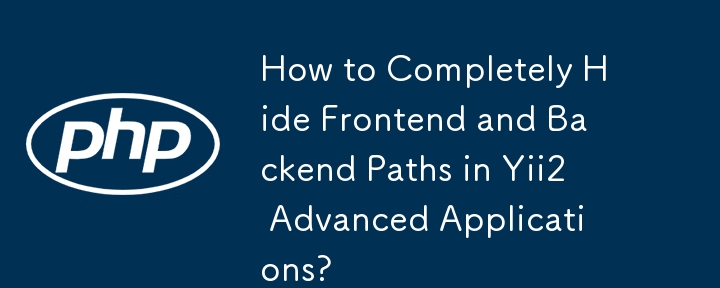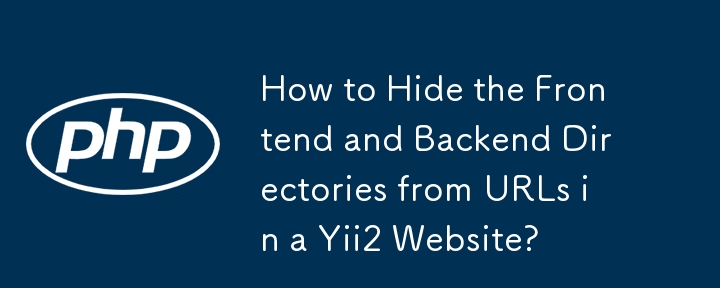Found a total of 10000 related content

HTML5 Template: A Base Starter HTML Boilerplate for Any Project
Article Introduction:Building your own HTML5 template: A concise guide
This article will guide you on how to create your own HTML5 template. We will step by step explaining the key elements of the HTML basic template, and finally providing a simple template that you can use and further build.
After reading this article, you will have your own HTML5 template. If you want to get the HTML template code now, read this article later, here is our final HTML5 template.
Key Points
HTML5 templates, as reusable templates, contain the necessary HTML elements, help avoid repeated code writing at the beginning of each project.
A basic HTML5 template should contain document type declarations, elements with language attributes, and passed characters
2025-02-08
comment 0
737
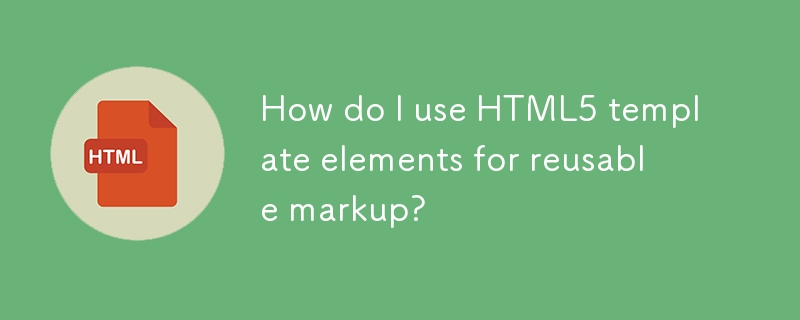
How do I use HTML5 template elements for reusable markup?
Article Introduction:The article discusses using HTML5 <template> elements for reusable markup, their benefits for code consistency, performance improvements, and integration with JavaScript for dynamic content.
2025-03-17
comment 0
345

Creating Reusable Content Structures with HTML5 Template Tag
Article Introduction:HTML5 tags are used to create reusable lazy content structures. The specific steps are: 1. Define the template; 2. Obtain and clone the template content through JavaScript; 3. Insert the clone content into the page. Its features include default invisible, support for any HTML, and require JS operations. It is suitable for scenarios such as component structure, dynamic loading, and preloading resources. The scripts and styles in the template need to be specially processed and cannot be nested in specific tags.
2025-07-06
comment 0
925

Using the HTML5 `` element for reusable content.
Article Introduction:Elements are native tools in HTML5 for storing unreleased HTML fragments, and can be efficiently reused after cloning through JavaScript. 1. Get template nodes; 2. Cloning content; 3. Filling data; 4. Inserting page. When using it, you need to pay attention to: the content and styles must be accessed through cloning, and must be defined separately and compatible with modern browsers. Suitable scenarios include dynamic lists, pop-up components, table rows and other duplicate structures.
2025-07-08
comment 0
470
My personal thoughts on the ThinkPHP Admin module, I don't know if it's right or not
Article Introduction:My ThinkPHP version is 3.2.3. Currently, the ways to open the backend are domain name/admin/login and domain name/admin.php/login. Then I am wondering if only one of the addresses can be specified to access the backend. I think it is this address: domain name /admin.php/login was canceled: Domain name /admin/login was checked...
2016-07-06
comment 0
994

yii2 admin finished using
Article Introduction:Yii2 AdminLTE is a backend management system template based on the Yii2 framework and AdminLTE management template. It provides a wealth of controls and features that can help developers quickly build powerful backend management systems. Installation and use: Install through composer: composer requires kartik-v/yii2-adminlte to configure the AdminLTE module in config/web.php to run the migration command: yii migrate/up --migrationPath=@kartik-v/yii2-adminlte/migrations
2025-04-18
comment 0
384

Laravel user login function
Article Introduction:Laravel provides a comprehensive Auth framework for implementing user login functions, including: Defining user models (Eloquent model), creating login forms (Blade template engine), writing login controllers (inheriting Auth\LoginController), verifying login requests (Auth::attempt) Redirecting after login is successful (redirect) considering security factors: hash passwords, anti-CSRF protection, rate limiting and security headers. In addition, the Auth framework also provides functions such as resetting passwords, registering and verifying emails. For details, please refer to the Laravel documentation: https://laravel.com/doc
2025-04-18
comment 0
1097
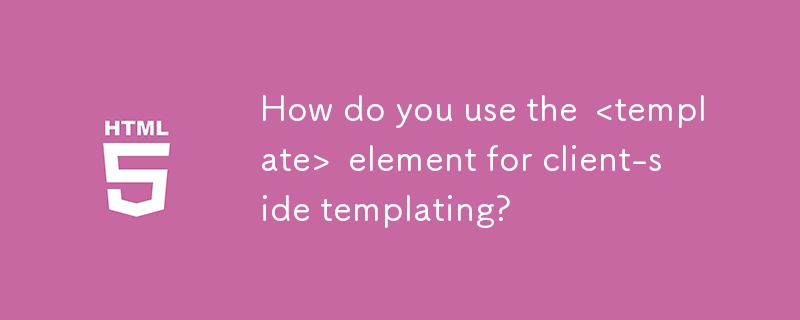

10 JavaScript and jQuery Templates Engines
Article Introduction:Ten JavaScript and jQuery template engines worth learning
A template is a functional specification that generates output language strings (strings or AST forms) from a data packet using syntax similar to output results. Today, we have compiled ten JavaScript and jQuery template engines that you may be interested in.
Related readings:
10 jQuery layout tutorials
Sublime2 vs Notepad
10 random HTML5 network tools and resources
NANO – jQuery Template Engine
The simplest jQuery template engine, perfect for JSON parsing.
Source code and demo 2. "template" binding
2025-02-27
comment 0
444

How to Fix Magento Login Issues with Cookies and Sessions
Article Introduction:This article is a collaborative effort with Ktree. Thank you to our partners who make SitePoint possible.
This article examines how Magento cookie misconfigurations can disrupt login functionality in both the storefront and admin backend, explains t
2025-02-09
comment 0
482

Building a PhoneGap App with a WordPress Backend
Article Introduction:This tutorial demonstrates using WordPress as a backend for a PhoneGap mobile application, focusing on creating REST APIs for seamless communication. We'll build a simple login and blog post display app. While PhoneGap itself is discontinued, the p
2025-02-18
comment 0
1045
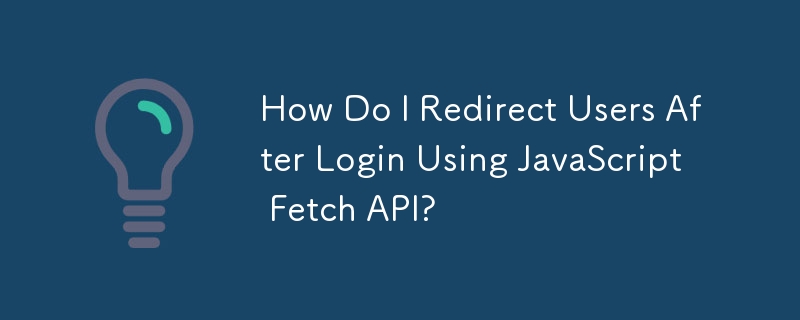
How Do I Redirect Users After Login Using JavaScript Fetch API?
Article Introduction:How to redirect the user to another page after login using JavaScript Fetch API?ProblemUsing the JavaScript code below, the authentication token is first obtained using the firebase.auth() method. A POST request is then made to the FastAPI backend. I
2024-10-18
comment 0
1215




